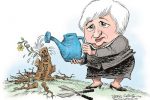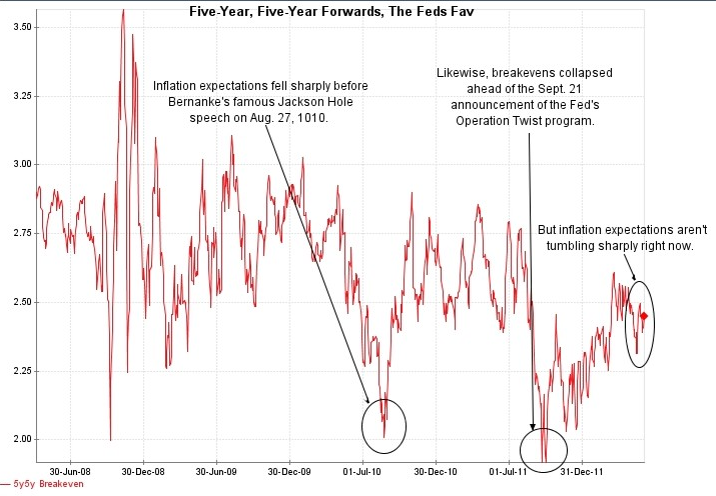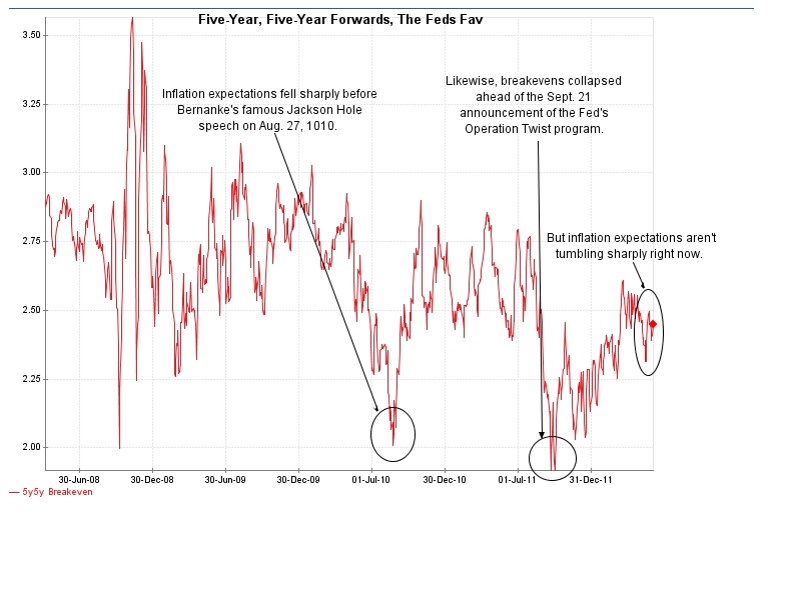Many of the capital markets are enjoying reversals today. Equity markets are mostly higher. The MSCI Emerging Market equity index is up more than 1%. Several key commodities, like oil and copper, are firmer. Bond markets, outside the US, are firmer, with the Japan's 10-year yield slipping to new record lows slightly below 20 bp. The dollar is mixed, as the dollar-bloc currencies firm, as are most of the freely traded emerging market currencies, with the beleaguered South African rand leading the pack (~1.1%), with the Russian ruble a close second (~0.9%). The European complex, including sterling, and the yen are heavier.
The most important economic news that appears to have helped foster the "risk-on" activity was China's trade figures. We suspect that are sharp and persistent moves to start the year, the market was vulnerable to a counter-trend move and almost any spark may have been sufficient.
China reported a considerably larger than expected trade surplus. How this was achieved depends on how the data is denominated. Specifically, China reports its trade figures in yuan and dollars. In yuan terms, the surplus jumped to CNY382.05 from CNY343.10. The consensus had expected a small decline. The record large trade surplus was recorded in October at CNY393.20 bln.
The larger trade surplus in December was driven by stronger than expected exports. Exports, in yuan terms, rose 2.3%. The consensus was for a 4.1% decline after a 3.7% fall in November. It is the first year-over-year increase since June and only the second positive reading for all of last year. Imports fell 4.0% year-over-year, which is about half of the pace the market expected.
A somewhat different picture emerges if the figures are in US dollars. The trade surplus widened to $60.09 bln from $54.1 bln. It was the fifth largest for 2015. In dollar terms, exports did not rise but fell 1.4%, which was still considerably better than the Bloomberg consensus (-8%). Imports fell 7.6% in dollar terms. This compares with an 8.7% fall in November and expectations for an 11% decline in December.
From an economic point of view, it is difficult to construct a persuasive argument that the improved trade figures are due an almost 4% yuan depreciation last August against the dollar. More than half was recouped in September and October. The BIS nominal and real effective yuan made record highs in November. Instead, we take the Chinese government officials guidance at face value when he cited seasonal patterns.
There does seem to be something else taking place. China insists on considering trade with its Special Administrative Region, Hong Kong as part of its foreign trade. This is really internal trade, like goods shipped from Bavaria to Berlin, or from New York to New Jersey. China's exports to HK last month surpassed its exports to the US and Europe. The 10.8% jump was the highest in three years. Seasonal influences? Perhaps, but it was the most exports for December in more than a decade.
There are two broad explanations. The first is a rekindling of the fictitious invoicing problem that skewed the data a few years ago. The second explanation, which may not be completely separate, has to do some of the trade being a way to capitalize on the wide gap between the onshore and offshore yuan. The role of trade or trade invoices as a way to conduct currency arbitrage needs to be explored.
Details in the report suggest that oil imports last year were a record. Iron ore imports also rose in December. The increase in steel exports may be a proverbial canary in a coal mine. What many fear about the weaker yuan is that China, which is plagued with over-capacity in numerous industries (the origin of which predates the 2008-2009 investment surge, which served to exacerbate the situation) may choose to export its surplus. If this materializes in significant scale, it would weigh on prices, aggravate the lowflation challenge, and undermine other producers, weakening their growth.
After joining the WTO in 2001, and being included in the next iteration of the SDR, China's other goal is to be given market economy status. Europe is to debate the issue next month, with a decision expected near mid-year. China's line is that this should be an automatic designation after being in the WTO for 15 years. The US weighs in against giving China such a designation for fear that it would be more difficult to counter unfair trade practices, such as dumping goods.
The North American calendar is light. Two Fed officials (Rosengren and Evans) and the Beige Book later in the session. The euro has approached the lower end of its $1.08-$1.10 range that have largely confined the single currency since the ECB meeting early last month. There have been a few breaks of the range that have proven to be unsustainable. The greenback rose to almost JPY118.40, a three-day high, but it has run out of steam, and the intraday technical readings warn of the risk of a pullback. Sterling bounced off of multi-year lows seen yesterday but also ran out of steam. A move above $1.45 is needed to continue to correction. The dollar-bloc gains also seem vulnerable as if market participants do not quite trust the counter-trend moves yet.
Tags: Eric Rosengren





























